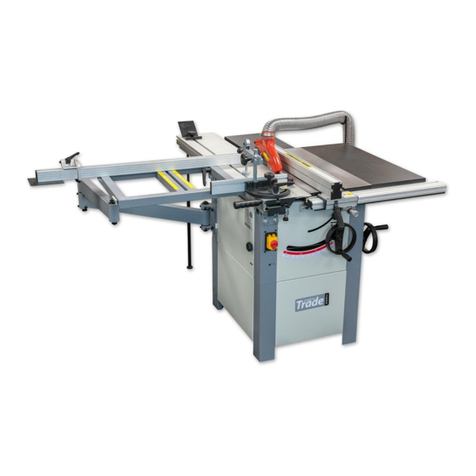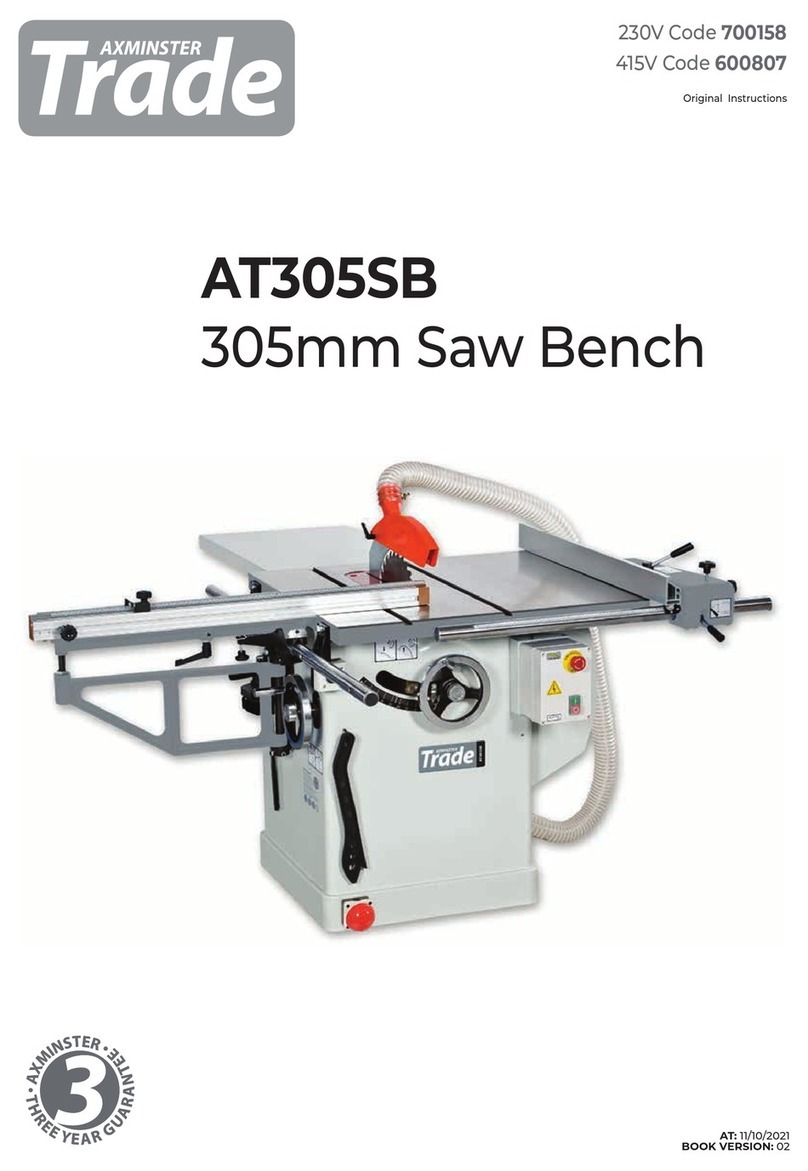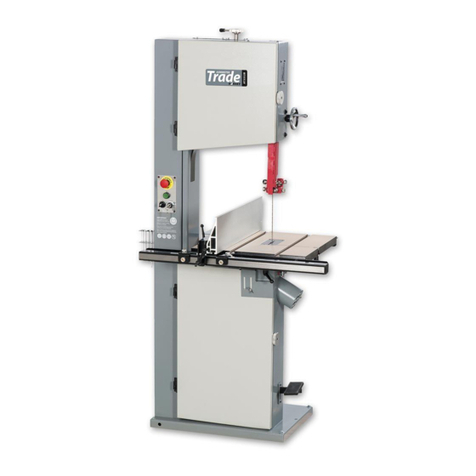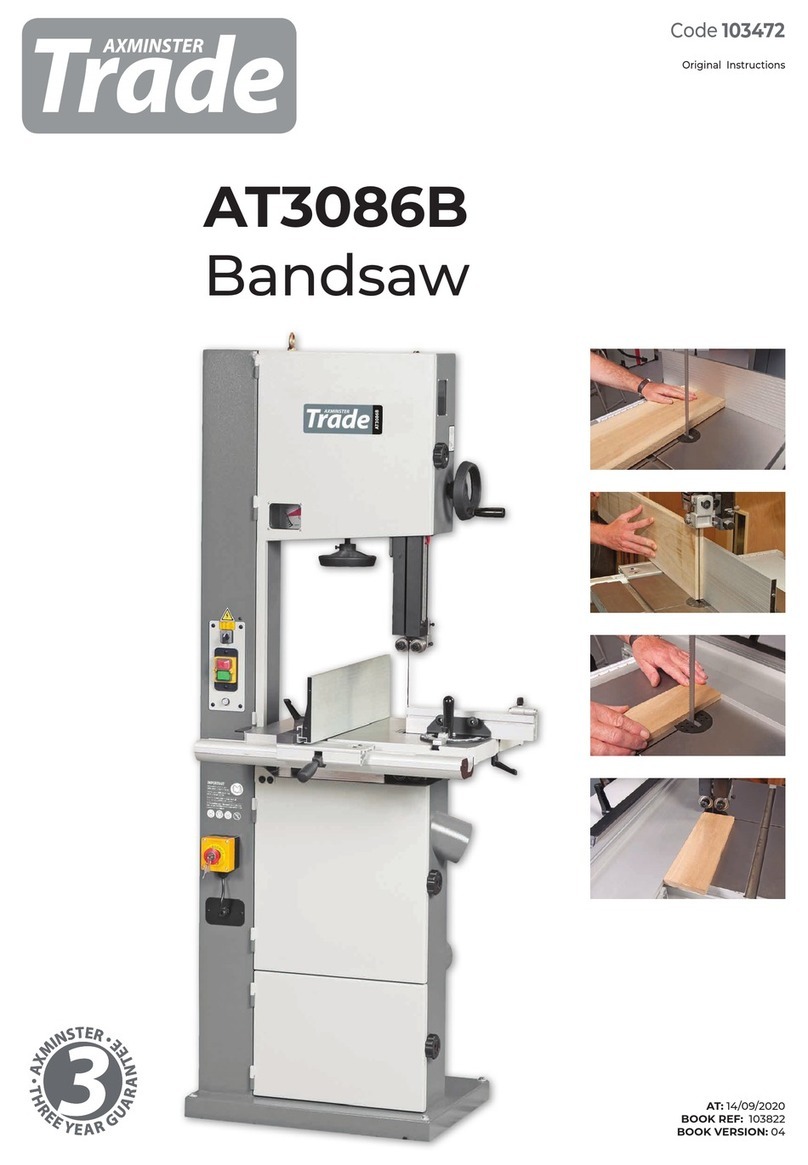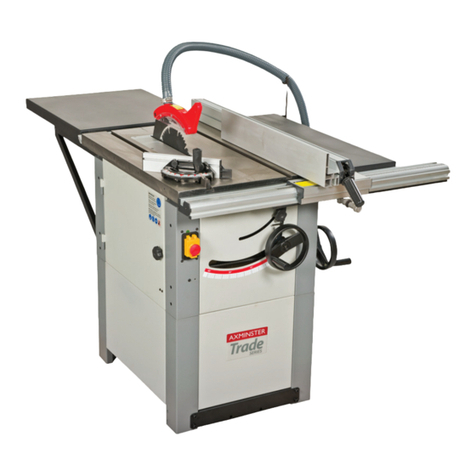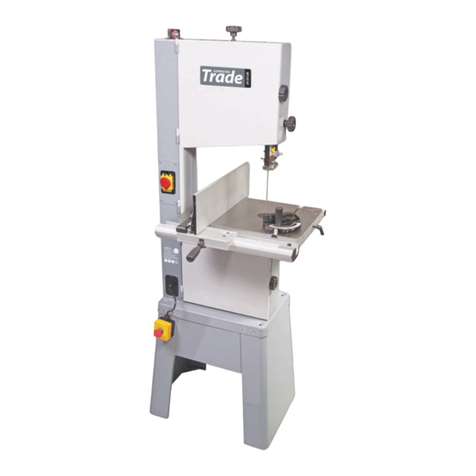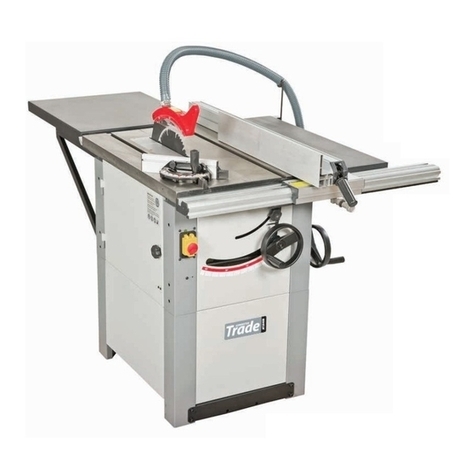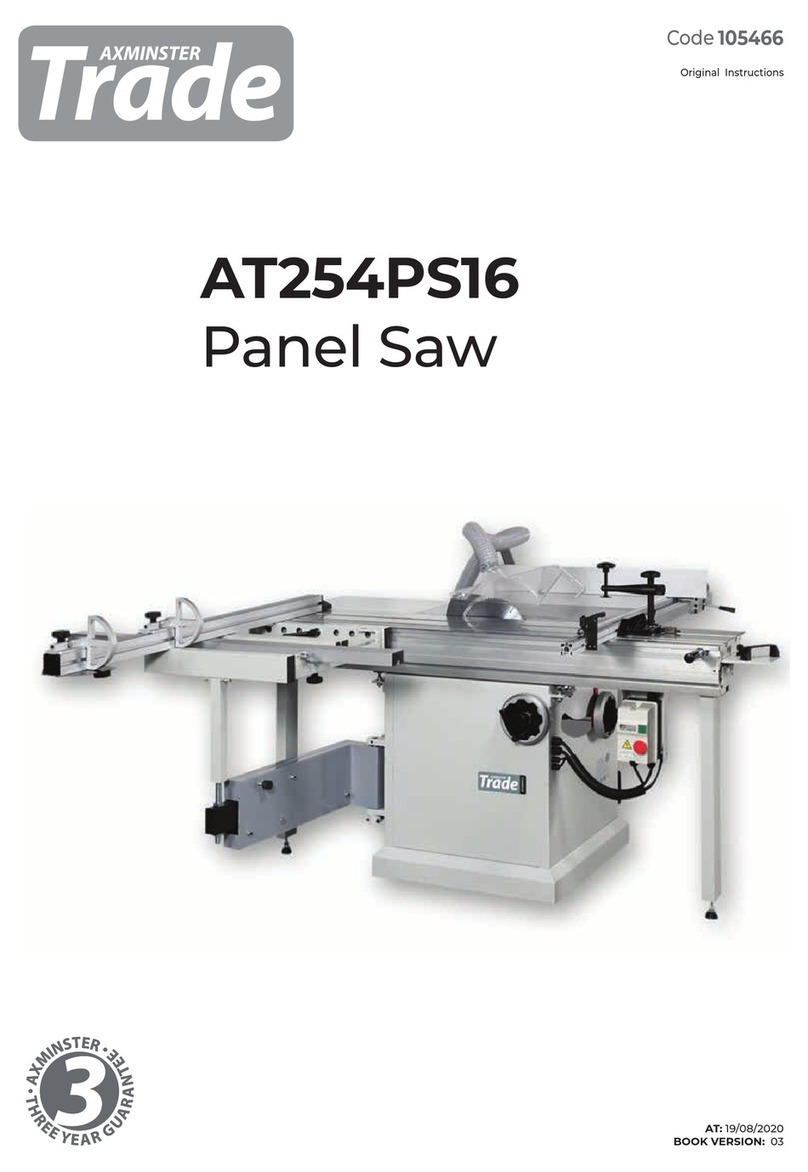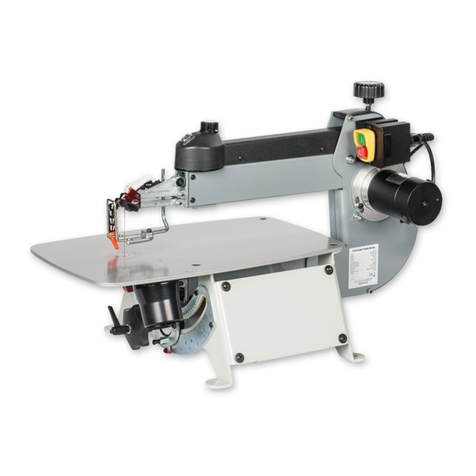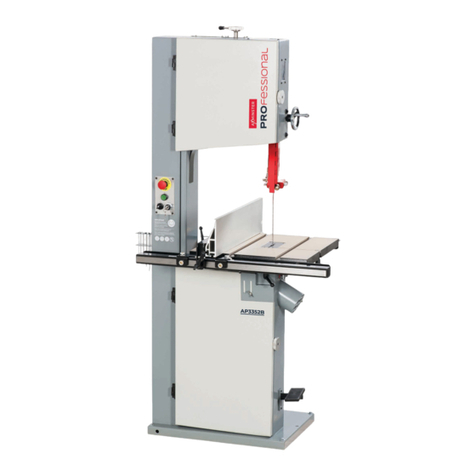
05
It is good practice to leave the machine unplugged
until work is about to commence, also make sure
to unplug the machine when it is not in use, or
unattended. Always disconnect by pulling on the plug
body and not the cable. Once you are ready to
commence work, remove all tools used in the setting
operations (if any) and place safely out of the way.
Re-connect the machine.
Make sure you are comfortable before you start work,
balanced, not reaching etc..
If the work you are carrying out is liable to generate
flying grit, dust or chips, wear the appropriate safety
clothing, goggles, gloves, masks etc., and if the work
operation appears to be excessively noisy, wear
ear-defenders. If you wear your hair in a long
style, wearing a cap, safety helmet, hairnet, even a
sweatband, will minimise the possibility of your hair
being caught up in the rotating parts of the tool,
likewise, consideration should be given to the removal
of rings and wristwatches, if these are liable to be a
‘snag’ hazard. Consideration should also be given to
non-slip footwear, etc..
Do not work with cutting tools of any description
if you are tired, your attention is wandering or you
are being subjected to distraction. A deep cut, a lost
fingertip or worse; is not worth it!
NEVER LEAVE MACHINE RUNNING UNATTENDED.
Turn the power OFF. Do not leave machine until it
comes to a complete stop.
MAKE WORKSHOP CHILDPROOF. Cover the saw
adequately when not in use to prevent children from
damaging themselves by tampering with it.
NEVER STAND ON THE MACHINE. Serious injury
could occur if the machine is tipped or if a cutting tool
is accidentally contacted. Do not store materials above
or near a machine, such that it is necessary to stand on
the machine to reach them.
HANDLE WITH EXTREME CARE Whenever
transporting or installing machinery, and always use a
lifting tool.
AVOID ACCIDENTAL STARTING. Ensure the switch is
OFF before plugging in to mains.
BE AWARE that accidents are caused by carelessness
due to familiarity. ALWAYS concentrate on the job in
hand, no matter how trivial it may seem.
Do not use this machine within the designated safety
areas of flammable liquid stores or in areas where there
may be volatile gases. There are very expensive, very
specialised machines for working in these areas, THIS
IS NOT ONE OF THEM.
Check that blades are the correct type and size, are
undamaged and are kept clean and sharp, this will
maintain their operating performance and lessen the
loading on the machine. Above all, OBSERVE…. make
sure you know what is happening around you, and
USE YOUR COMMON SENSE.
GENERAL SAFETY INSTRUCTIONS FOR 230V MACHINES
ADDITIONAL SAFETY INSTRUCTIONS FOR SCROLL SAW
(UNDER NO CIRCUMSTANCES SHOULD CHILDREN BE ALLOWED IN WORK AREAS)
1. Wear safety goggles as protection against flying
wood chips and saw dust. In many cases, a full face
shield is even better protection. A dust mask is also
recommended to keep saw dust out of your lungs.
2. The scroll saw must be bolted securely to a stand or
workbench. If the saw has a tendency to move during
certain operations, bolt the stand or workbench to the
floor.
3. A solid wood workbench is stronger and more stable
than a workbench with a plywood table.
4. This scroll saw is for indoor use only.
5. Do not cut pieces of material which are too small to
be held by hand.
6. Clear the work table of all objects except the
workpiece (tools, scraps .rulers etc.) before turning the
saw on.
7. Make sure the blades’ teeth are pointing down,
toward the table, and that the blade tension is correct.
